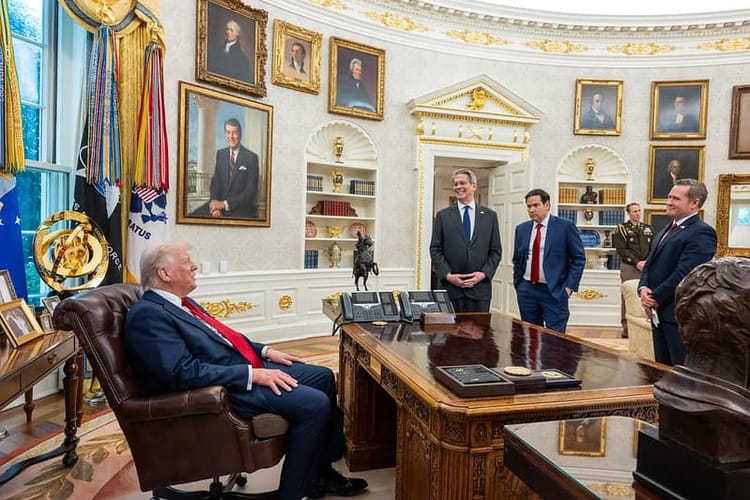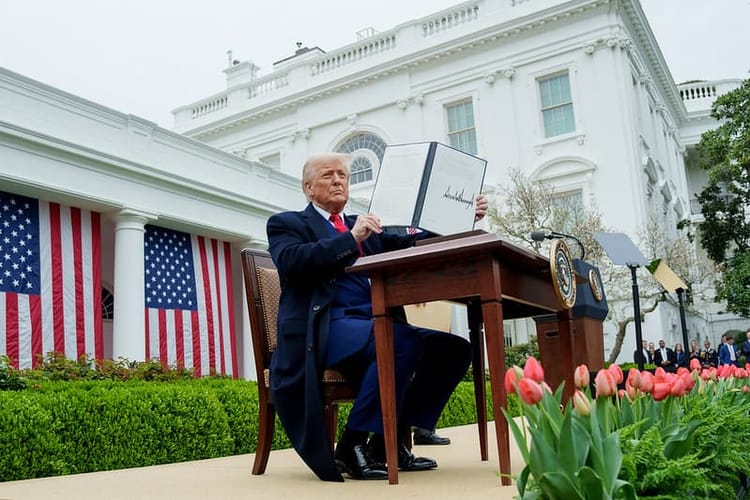USCIT, US District Court Rule Against Trump Administration's Use of IEEPA for Tariffs

On May 28th, the US Court of International Trade (USCIT) issued its ruling that President Trump's duties on most US trading partners exceed the powers granted by the International Emergency Economic Powers Act (IEEPA).
The Trump administration has appealed the USCIT's ruling. On May 29th, the US Court of Appeals for the Federal Circuit (CAFC) granted an "immediate administrative stay" of the USCIT's ruling.
Also on May 29th, the US District Court for the District of Columbia (USDC) issued its own ruling in a separate case dealing with the IEEPA duties. It found that IEEPA does not authorize the assessment of tariffs at all and, therefore, the USCIT does not have jurisdiction to hear the case. The USDC's ruling has also been temporarily stayed pending appeal.
As a result, US Customs and Border Protection (CBP) will continue to assess these duties for as long as a stay remains in effect. CBP may be directed to suspend liquidation of entries while appeals proceed. If CBP does not suspend liquidation, importers should maintain records of entries for which IEEPA duties were paid and be prepared to file disputes to prevent suspension of liquidation while appeals are ongoing.
Outlook
- The lower court rulings will almost certainly be appealed to the Supreme Court. It may take several months to a year to reach a definitive ruling.
- The CAFC and the Supreme Court will likely grant additional stays while appeals are ongoing.
- The Trump administration faces better odds of prevailing in its interpretation of IEEPA at the CAFC or Supreme Court.
- A loss on appeal would significantly limit the speed and flexibility with which the administration can impose tariffs in the future.
Other Impacts
- The rulings are unlikely to significantly impact ongoing trade negotiations with other countries through July 9th (the date on which country-specific reciprocal duties are expected to resume for all countries without a trade deal, except for China).
- President Trump still has considerable flexibility to implement tariffs using other laws, such as Section 301, Section 232, and Section 122. However, these statutes do not allow tariffs to be implemented immediately and require pre-requisite steps such as comment periods and investigations, or they limit the time period during which tariffs can be applied.
- The USCIT and USDC rulings are limited in scope. It does not impact existing Section 232 duties (steel, aluminum, automobiles) and Section 301 (China) duties, which continue to be assessed.
Analysis
The USCIT ruled against the April 2 "Liberation Day" reciprocal duties and the duties on goods from Canada, Mexico and China targeting illegal gang activity, human trafficking and illegal drugs (collectively, trafficking duties) on separate legal bases. According to the Court:
The reciprocal duties violate the separation of powers principle, and Congress did not intend that IEEPA be used for unrestricted tariffs in response to trade deficits
Here, the Court's ruling hinges upon the following language in the IEEPA statute at 50 USC § 1702, which reads as follows:
First, the Court emphasized that the power to assess tariffs rests with the Legislative Branch and is only selectively delegated to the Executive Branch.
In the case of IEEPA, the USCIT asserted that this delegated power to "regulate... importation" did not include unlimited authority to set tariff rates simply by declaring an emergency. According to the Court:
Regardless of whether the court views the President's actions through the nondelegation doctrine, through the major questions doctrine, or simply with separation of powers in mind, any interpretation of IEEPA that delegates unlimited tariff authority is unconstitutional.
Second, the Court drew a distinction between IEEPA and its predecessor, the Trading with the Enemy Act (TWEA). According to the USCIT, Congress intentionally drafted IEEPA to be "more limited in scope" than TWEA and "subject to various procedural limitations," in response to President Nixon's use of TWEA to implement a blanket ten percent tariff in August 1971:
Importantly, President Trump's tariffs do not include the limitations that the court in Yoshida II relied upon in upholding President Nixon's actions under TWEA. Where President Nixon's tariffs were expressly limited by the rates established in the HTSUS... the tariffs here contain no such limit....
Thus, this court reads "regulate... importation" to provide more limited authority so as to avoid constitutional infirmities and maintain the "separate and distinct exercise of the different powers of government" that is "essential to the preservation of liberty." The Federalist No. 51 (Alexander Hamilton or James Madison). (some citations omitted)
Third, the Court cited Section 122 of the Trade Act of 1974, which allows the President to impose tariffs in response to "large and serious balance-of-payments deficits."
According to the panel, "trade deficits are one of the key balance-of-payment deficits and can be directly impacted by mechanisms such as import quotas and tariffs, as authorized by Section 122."
The Court argued that, notwithstanding the language of the IEEPA statute, by merely enacting Section 122, Congress demonstrated it did not intend for trade deficits to be addressed as emergencies under IEEPA:
The trafficking duties do not effectively "deal with" the threat for which they were implemented
For the trafficking duties, the Court pivoted to the IEEPA statute at 50 USC § 1701(a) and (b), which read as follows:
(b) The authorities granted to the President by section 1702 of this title may only be exercised to deal with an unusual and extraordinary threat with respect to which a national emergency has been declared for purposes of this chapter and may not be exercised for any other purpose. Any exercise of such authorities to deal with any new threat shall be based on a new declaration of national emergency which must be with respect to such threat. (emphasis added)
From this section, the USCIT extracted a four-prong test that must be satisfied in order for the President to use powers granted under IEEPA:
- There must be a "threat... which has its source in whole or substantial part outside the United States, to the national security, foreign policy, or economy of the United States."
- The threat must be "unusual and extraordinary."
- A national emergency must be declared with respect to the threat.
- The President's use of IEEPA must "deal with" the threat.
According to the panel, President Trump's use of IEEPA to implement the trafficking tariffs on Canada, Mexico and China fails the fourth prong of this test:
The Government's reading would cause the meaning of "deal with an unusual and extraordinary threat" to permit any infliction of a burden on a counterparty to extract concessions, regardless of the relationship between the burden inflicted and the concessions extracted. If "deal with" can mean "impose a burden until someone else deals with," then everything is permitted.... Surely this is not what Congress meant when it clarified that IEEPA powers "may not be exercised for any other purpose" than to "deal with" a threat.
Depending on the outcome of the USCIT / USDC jurisdictional conflict, we may analyze the USDC's ruling in a separate brief.
Summary Assessment
The USCIT and USDC rulings are significant challenges not only to President Trump's use of IEEPA for creating nearly instantaneous economic leverage via tariffs, but also to the administration's approach to presidential power in general. However, breathless media reports that IEEPA duties are now "illegal" are premature. The next step is an appeals process that will play out over a period of months.
There is a reasonable chance that the administration will prevail. Historically, the courts have given broad deference to the President to determine what constitutes a national emergency or a national security threat and how to respond within the bounds of the law. It is not unheard of for the USCIT to issue rulings based on relatively stringent interpretations of trade law or administrative authority that are subsequently overturned on appeal by the CAFC.
In the meantime, the Trump administration may queue up other tools that will allow it to continue to apply pressure to trading partners. Implicit in the USCIT's ruling is that Section 122, which permits tariffs of up to 15 percent for a maximum of 150 days, is Congress's preferred method for dealing with trade deficits. Section 122 could briefly be used to maintain a 10 percent baseline tariff on all trading partners until other alternatives can be implemented.
In addition to Section 301 of the Trade Act of 1974 and Section 232 of the Trade Expansion Act of 1962, the administration can also deploy Section 338 of the Tariff Act of 1930. Section 338 allows for duties of up to 50 percent in response to foreign practices that:
The Office of the US Trade Representative's National Trade Estimate report indexes non-tariff barriers that could be cited by the Trump administration as evidence of discriminatory treatment by nearly every country with whom the US has a trading relationship.
President Trump can also capitalize on his influence in the current Republican-majority Congress to change the law, thereby sidestepping judicial restraints entirely. Questions of implementation aside, the administration's trade policy trajectory is unchanged. As Goldman Sachs president John Waldron explained today at a conference in New York, "I think we’re [still] going to go towards a 10 per cent universal baseline tariff with individualized, targeted tariffs on top with individual countries."





